Abstract
Pigeons were trained on a discrete-trials, simultaneous discrimination procedure, with confusable stimuli such that asymptotic performance was about 85% correct. Trials were terminated if no response occurred within 2 sec of stimulus onset, so that probability of responding was free to vary. The schedule of reinforcement for correct responses was varied, with the following results: (1) there was no relation between frequency of reinforcement and accuracy of responding. (2) In extinction, the probability of responding fell to low levels, but accuracy remained roughly constant. (3) When reinforcement was available after a fixed number of trials or after a fixed number of correct responses, the probability of responding increased with successive trials after reinforcement, but accuracy was generally constant. (4) When every fifth correct response was reinforced, accuracy decreased immediately after reinforcement if the birds were required to respond on every trial.
Full text
PDF
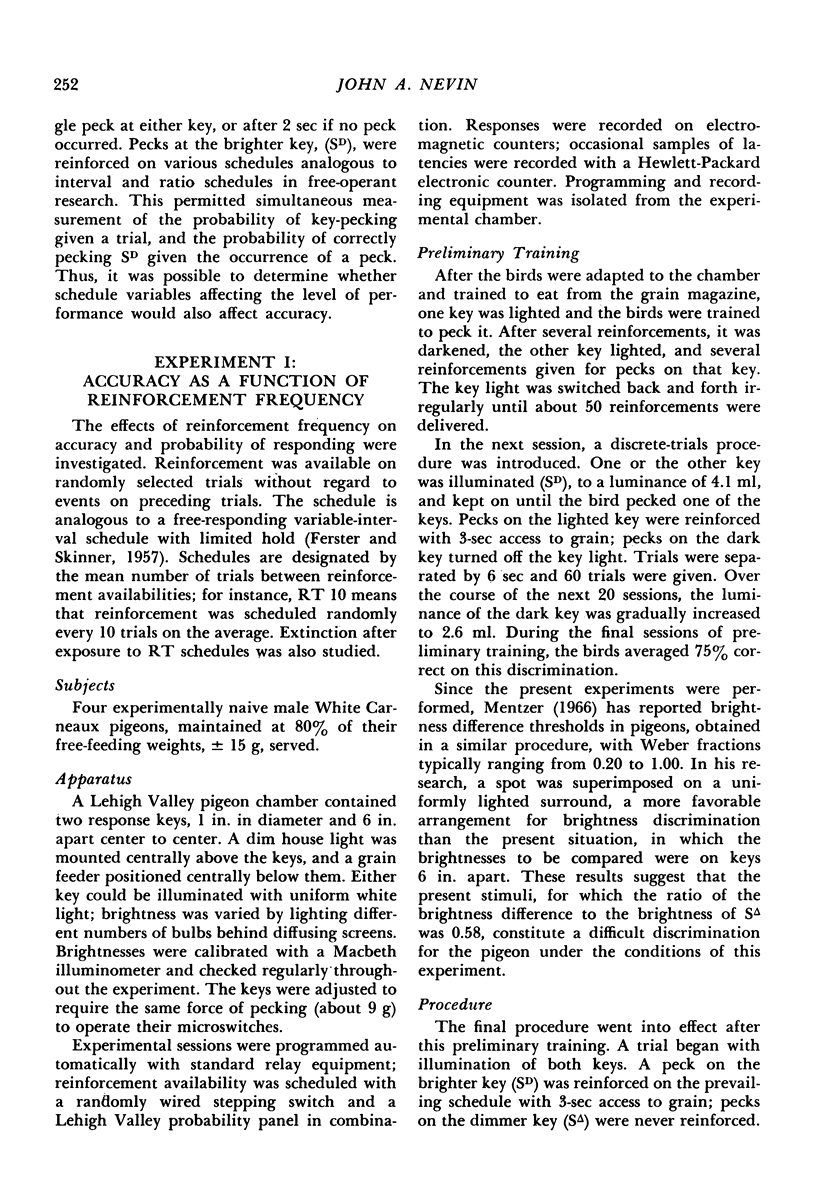
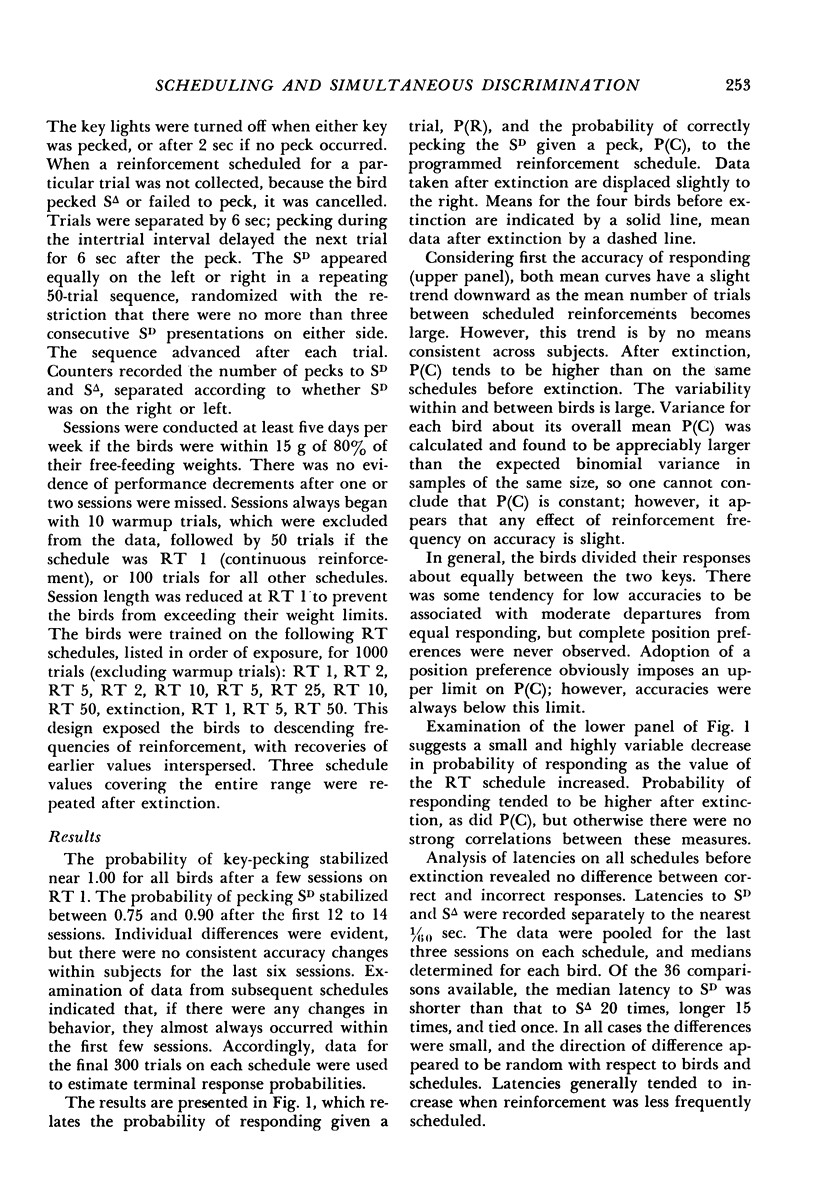
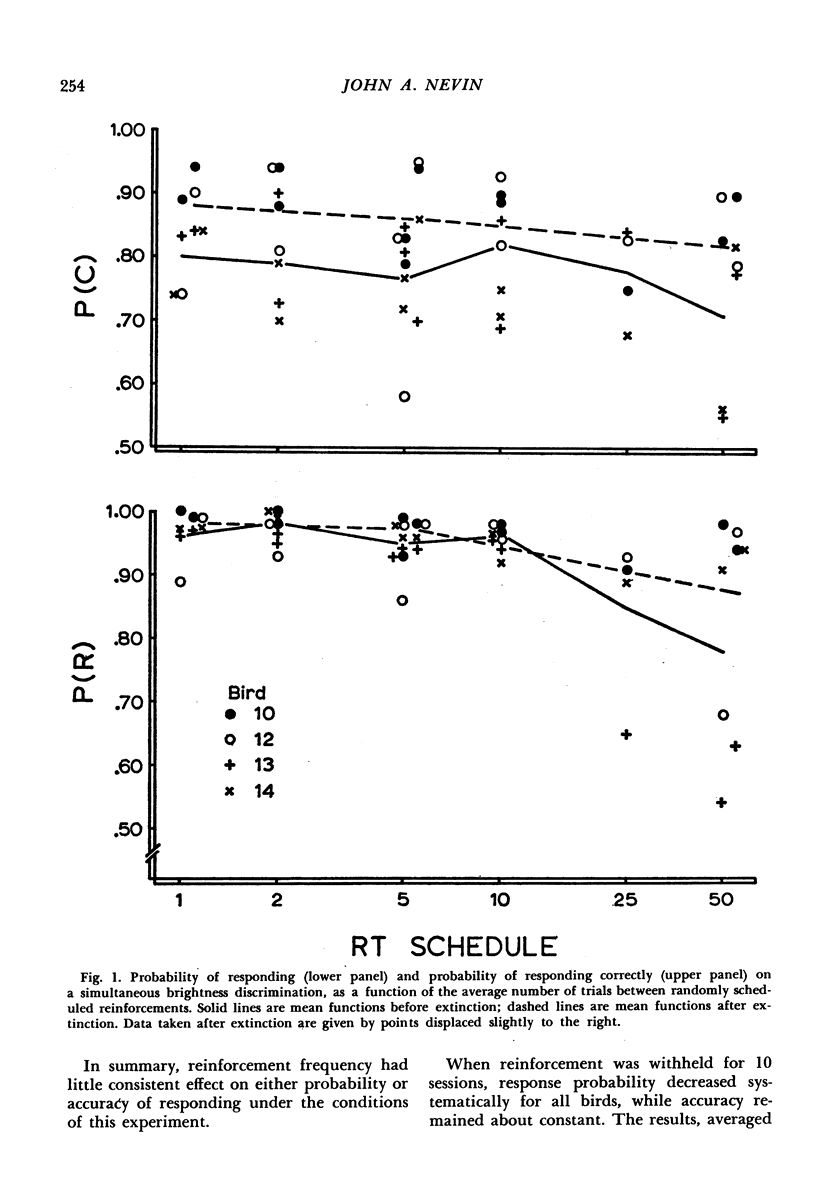
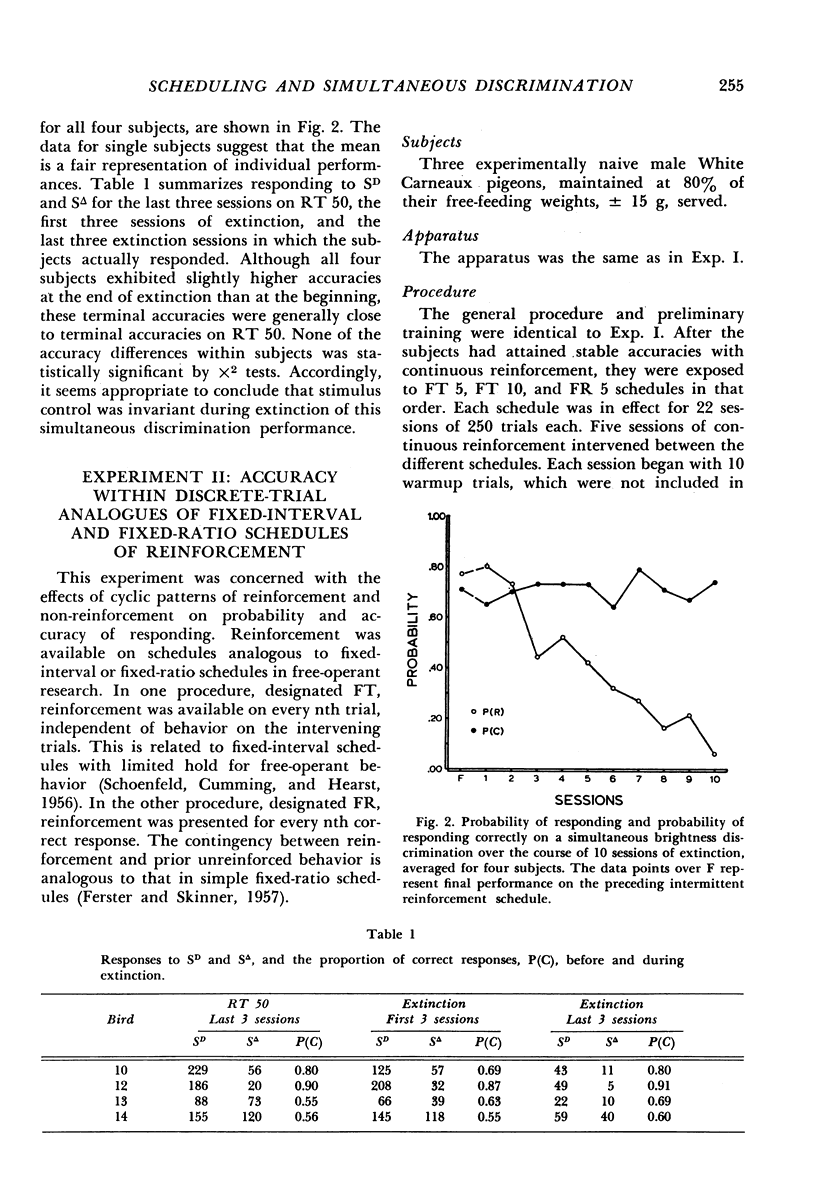
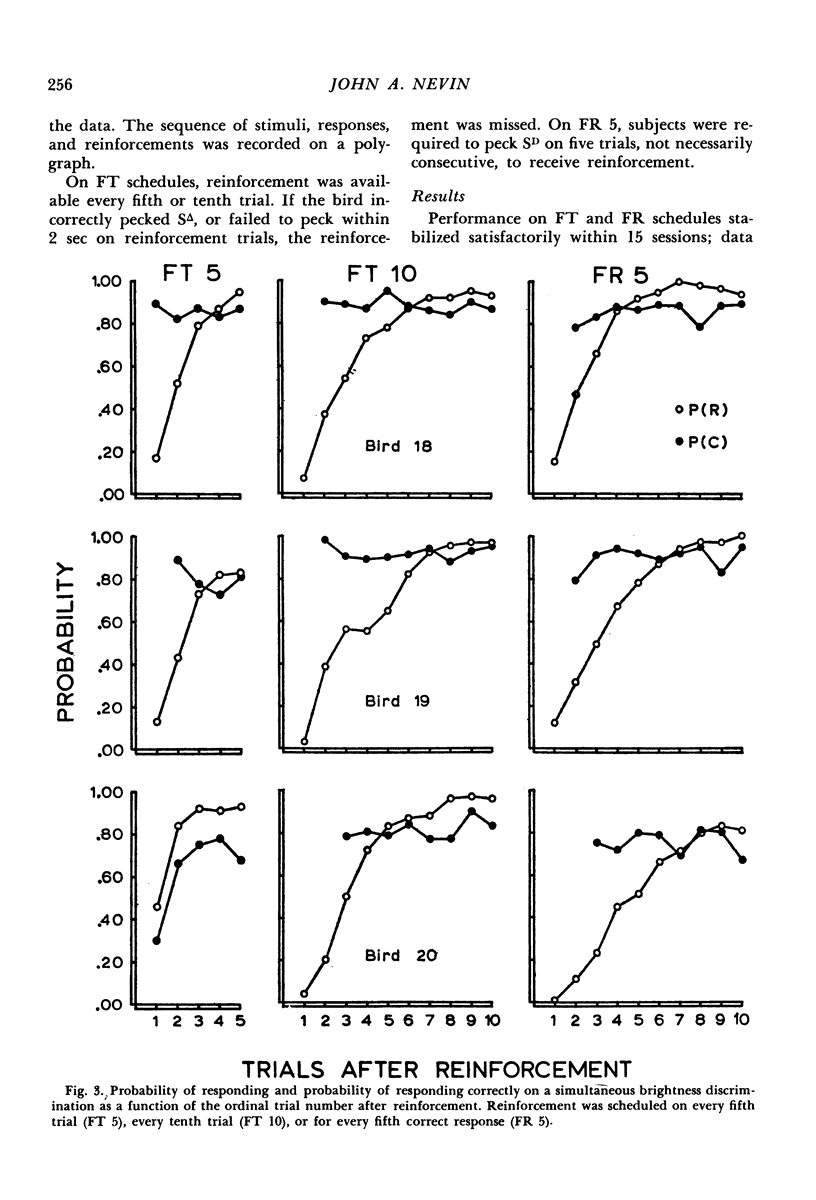
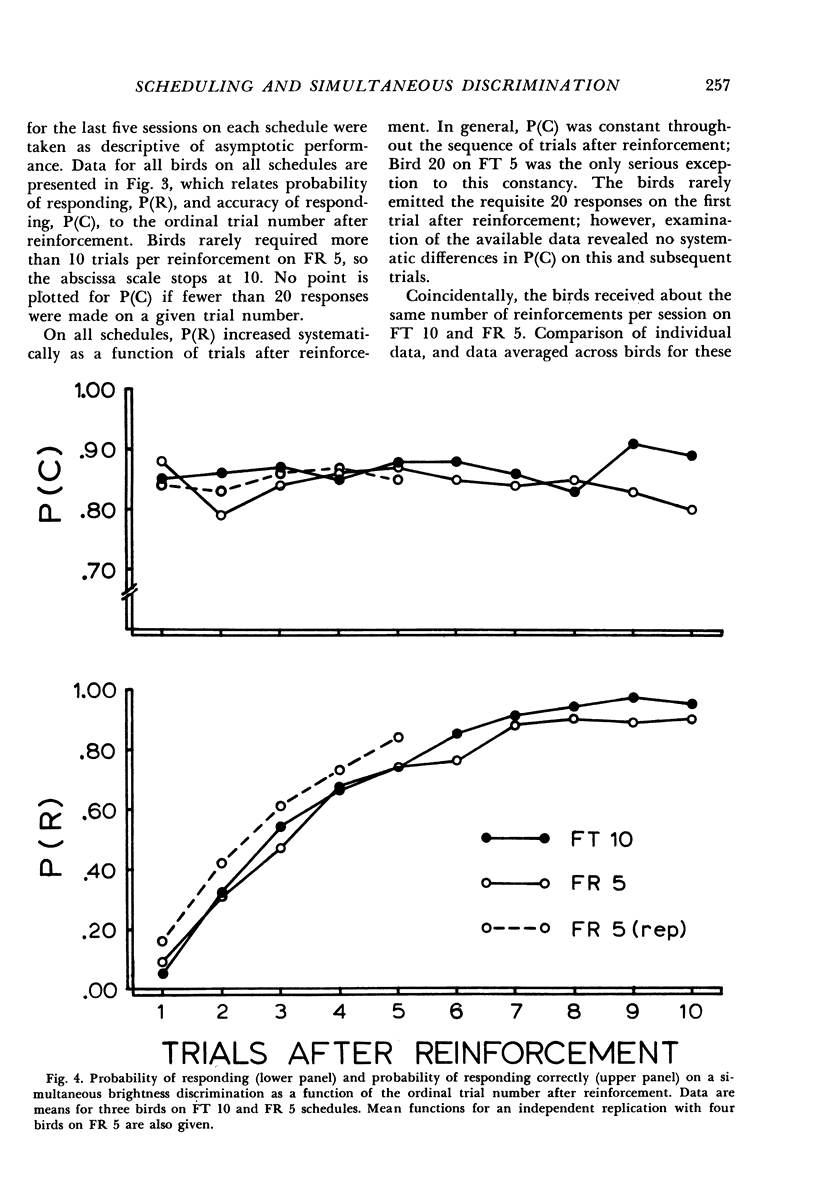
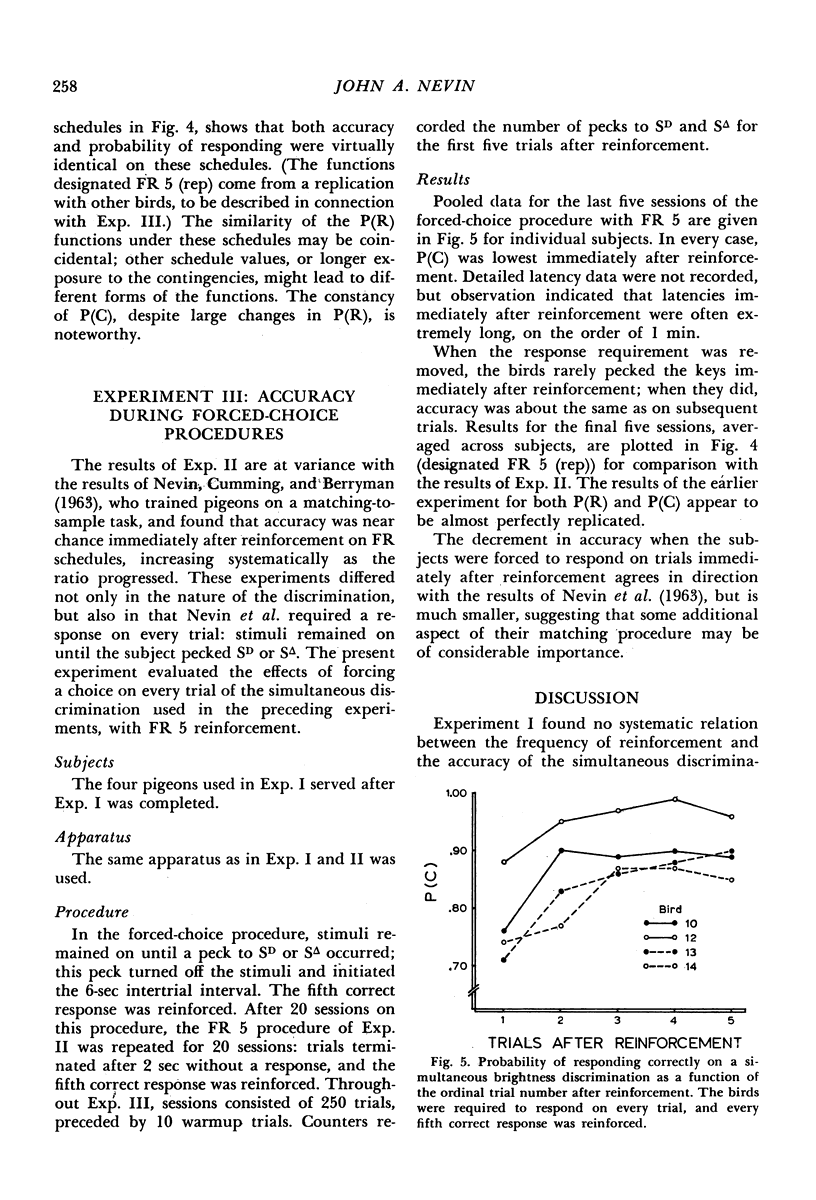
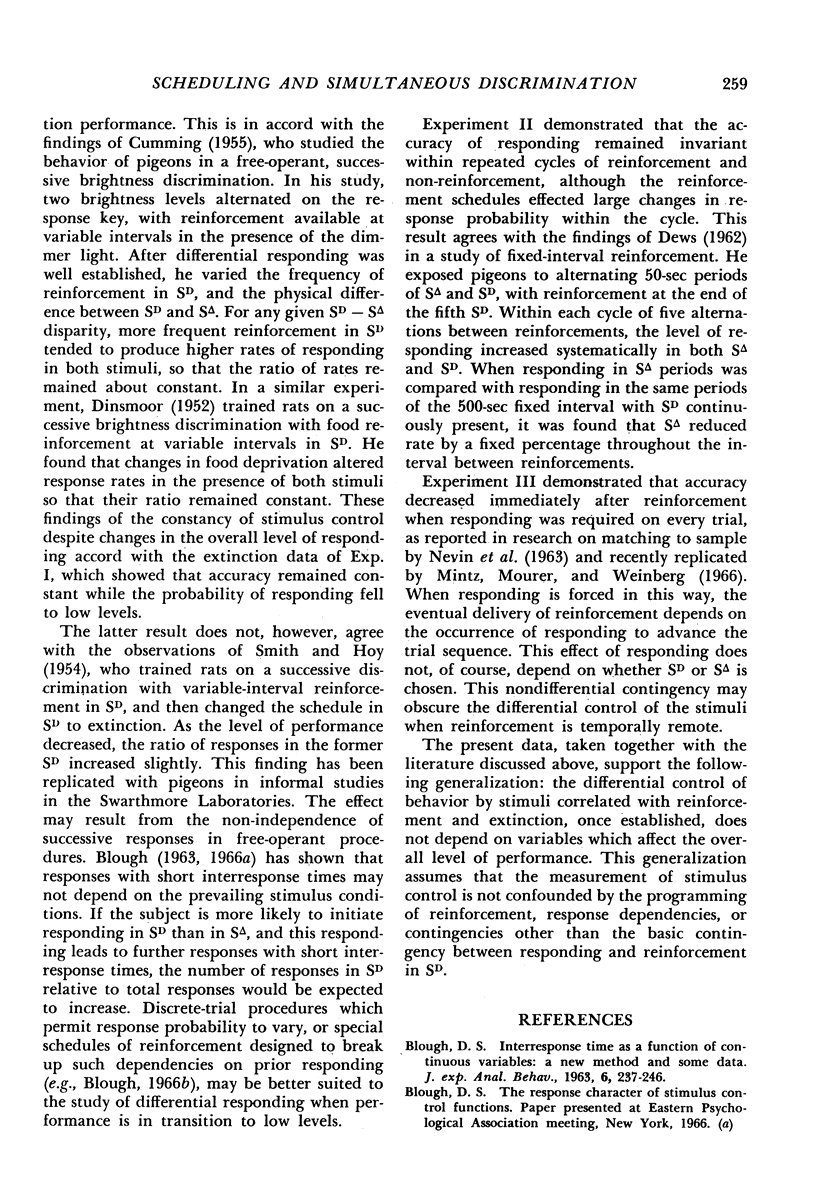
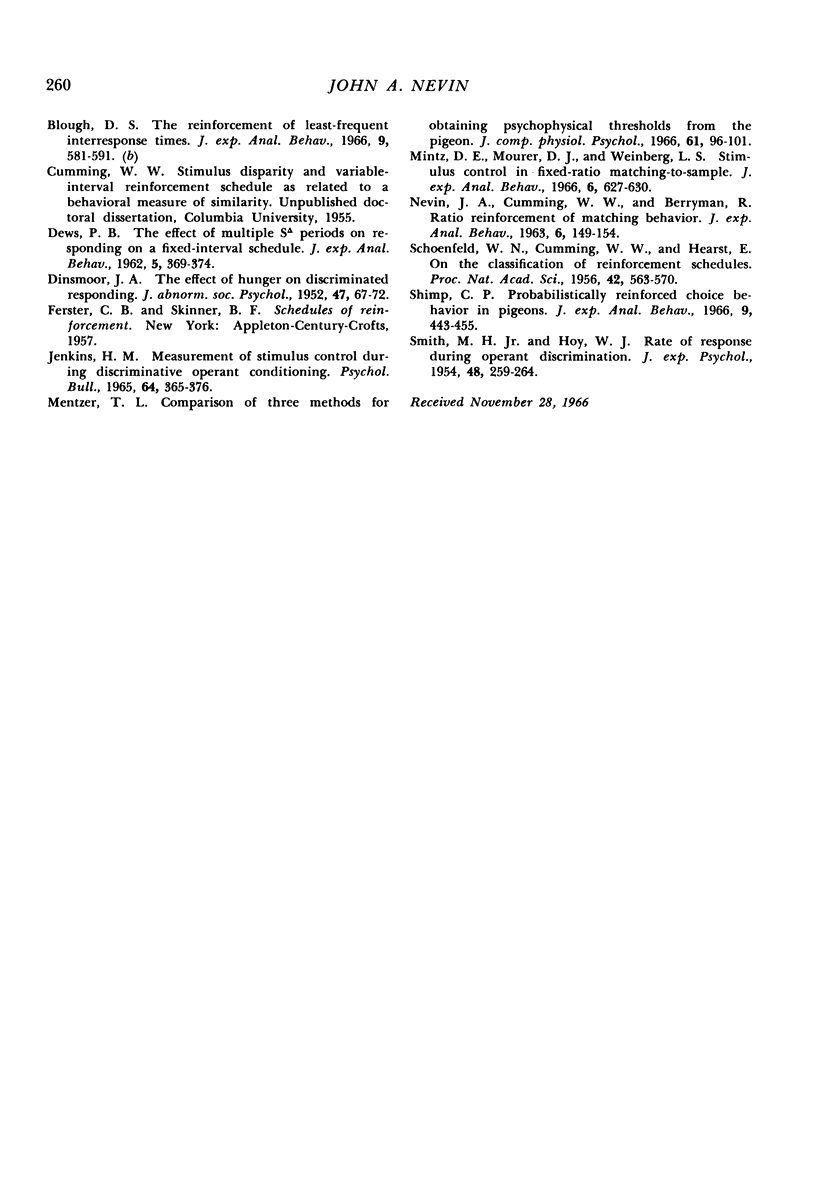
Selected References
These references are in PubMed. This may not be the complete list of references from this article.
- Blough D. S. Interresponse time as a function of continuous variables: a new method and some data. J Exp Anal Behav. 1963 Apr;6(2):237–246. doi: 10.1901/jeab.1963.6-237. [DOI] [PMC free article] [PubMed] [Google Scholar]
- Blough D. S. The reinforcement of least-frequent interresponse times. J Exp Anal Behav. 1966 Sep;9(5):581–591. doi: 10.1901/jeab.1966.9-581. [DOI] [PMC free article] [PubMed] [Google Scholar]
- DEWS P. B. The effect of multiple S delta periods on responding on a fixed-interval schedule. J Exp Anal Behav. 1962 Jul;5:369–374. doi: 10.1901/jeab.1962.5-369. [DOI] [PMC free article] [PubMed] [Google Scholar]
- DINSMOOR J. A. The effect of hunger on discriminated responding. J Abnorm Soc Psychol. 1952 Jan;47(1):67–72. doi: 10.1037/h0061273. [DOI] [PubMed] [Google Scholar]
- Jenkins H. M. Measurement of stimulus control during discriminative operant conditioning. Psychol Bull. 1965 Nov;64(5):365–376. doi: 10.1037/h0022537. [DOI] [PubMed] [Google Scholar]
- Mentzer T. L. Comparison of three methods for obtaining psychophysical thresholds from the pigeon. J Comp Physiol Psychol. 1966 Feb;61(1):96–101. doi: 10.1037/h0022814. [DOI] [PubMed] [Google Scholar]
- Mintz D. E., Mourer D. J., Weinberg L. S. Stimulus control in fixed ratio matching-to-sample. J Exp Anal Behav. 1966 Nov;9(6):627–630. doi: 10.1901/jeab.1966.9-627. [DOI] [PMC free article] [PubMed] [Google Scholar]
- NEVIN J. A., CUMMING W. W., BERRYMAN T. Ratio reinforcement of matching behavior. J Exp Anal Behav. 1963 Apr;6:149–154. doi: 10.1901/jeab.1963.6-149. [DOI] [PMC free article] [PubMed] [Google Scholar]
- SMITH M. H., Jr, HOY W. J. Rate of response during operant discrimination. J Exp Psychol. 1954 Oct;48(4):259–264. doi: 10.1037/h0056928. [DOI] [PubMed] [Google Scholar]
- Schoenfeld W. N., Cumming W. W., Hearst E. ON THE CLASSIFICATION OF REINFORCEMENT SCHEDULES. Proc Natl Acad Sci U S A. 1956 Aug;42(8):563–570. doi: 10.1073/pnas.42.8.563. [DOI] [PMC free article] [PubMed] [Google Scholar]
- Shimp C. P. Probabilistically reinforced choice behavior in pigeons. J Exp Anal Behav. 1966 Jul;9(4):443–455. doi: 10.1901/jeab.1966.9-443. [DOI] [PMC free article] [PubMed] [Google Scholar]


